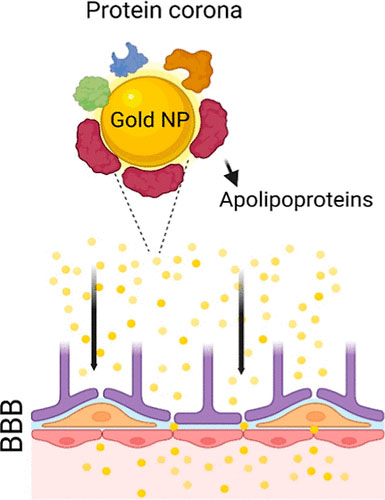[ad_1]
Mar 19, 2024
(Nanowerk Highlight) The blood-brain barrier, a tightly regulated interface between the circulating blood and the central nervous system, has lengthy been a frightening impediment within the quest to ship efficient therapies for neurodegenerative illnesses. Regardless of vital developments in our understanding of those debilitating situations, the event of therapies able to penetrating this protecting barrier and reaching the affected areas of the mind has remained an elusive aim.
Within the face of this problem, researchers have explored a variety of methods, from small molecule medication to antibodies and nanoparticles, in an try to breach the blood-brain barrier. Whereas a few of these approaches have proven promise, they’ve usually been hampered by limitations corresponding to low efficacy, off-target results, and security issues. As the worldwide burden of neurodegenerative illnesses continues to develop, the necessity for modern options has turn out to be more and more pressing.
Enter nanotechnology, a discipline that has revolutionized drug supply and opened up new prospects for focusing on the mind. Among the many varied forms of nanoparticles being investigated, gold nanoparticles have emerged as a promising contender on account of their biocompatibility, ease of synthesis, and flexibility in floor functionalization. These distinctive properties have made them a horny candidate for delivering therapeutic brokers throughout the blood-brain barrier.
A groundbreaking research printed in ACS Pharmacology & Translational Science (“Protein Corona Composition of Gold Nanocatalysts”) has shed new mild on the mechanisms by which a selected kind of gold nanocrystals, often called CNM-Au8®, a registered trademark of Clene Nanomedicine, Inc., can successfully traverse the blood-brain barrier and goal human mind tissue for treating neurodegenerative problems. Developed by Clene Nanomedicine, Inc., CNM-Au8 represents the primary gold nanocrystal suspension being actively explored as a therapeutic drug for situations corresponding to a number of sclerosis, amyotrophic lateral sclerosis, and Parkinson’s illness.

Graphical summary of the work. (Picture: ACS Pharmacology & Translational Science, CC-SA 4.0)
The researchers, led by Morteza Mahmoudi, carried out an in depth investigation of the protein corona profiles of CNM-Au8 gold nanocrystals to realize insights into their extended blood circulation time and skill to cross the blood-brain barrier. Not like conventional strategies of manufacturing colloidal gold nanoparticles, which depend on surface-capping natural ligands for crystal progress and stability, CNM-Au8 is synthesized with out these ligands. This distinctive property not solely ensures medical security and tolerability in human topics but in addition enhances its biocompatibility profile.
Upon interplay with human plasma, the researchers found that CNM-Au8 gold nanocrystals successfully appeal to a wide range of essential apolipoproteins, notably apolipoproteins E, to their surfaces. This interplay doubtless facilitates their passage by way of the blood-brain barrier. Apolipoproteins play an important position on this course of by way of two most important mechanisms.
“Firstly,” as Mahmoudi explains to Nanowerk, “sure apolipoproteins, corresponding to apolipoprotein E, can bind to particular receptors on the blood-brain barrier, selling receptor-mediated transcytosis. Secondly, apolipoproteins can mimic the low-density and high-density lipoproteins which can be naturally transported throughout the barrier, thereby enhancing the uptake and transport of CNM-Au8 nanocrystals into the mind.”
The research revealed that over 80% of the apolipoproteins collaborating within the protein corona composition of CNM-Au8 are comprised of 5 subtypes: apolipoproteins A-I, A-II, C-II, C-III, and E. These apolipoproteins work synergistically to boost the nanoparticles’ capability to cross the blood-brain barrier. For example, apolipoprotein A-I can traverse the barrier by way of clathrin-independent and cholesterol-mediated endocytosis, whereas the presence of apolipoprotein A-I particularly sure to apolipoprotein C-III demonstrates a notable correlation with cerebrospinal fluid apolipoprotein C-III ranges.
Moreover, the protein coronas of CNM-Au8 nanocrystals exhibit a considerable presence of albumin and a notable absence of opsonin-based proteins. This composition contributes to extended blood circulation by decreasing the potential for nanoparticle eradication by the immune system. The dearth of amassed absorption of excessive quantities of immunoglobulin and fibrinogen chains additionally suggests the absence of a fibrillation course of that some proteins bear after interplay with gold nanoparticles.
The implications of those findings are vital for the event of superior therapeutic brokers aimed toward combating neurodegenerative illnesses. The selective binding of apolipoproteins to CNM-Au8 nanocrystals, significantly apolipoproteins A-I, A-II, C-II, C-III, and E, demonstrates their pivotal position in facilitating nanoparticle transport by way of the blood-brain barrier. These important elements, mixed with the absence of great ranges of complement proteins and fibrinogens within the protein corona, contribute to the therapeutic potential of CNM-Au8 in focusing on neurodegenerative illnesses.
The modern and patented electrochemical synthesis strategy of CNM-Au8, free from surface-capping natural ligands, not solely ensures security and tolerability but in addition performs a key position in shaping its distinctive protein corona composition. This facet is especially related within the context of medical purposes, as evidenced by ongoing medical trials. The distinctive protein corona of CNM-Au8 gold nanocatalysts opens new avenues for the event of nanoparticle-based therapies, significantly for neurodegenerative situations, the place blood-brain barrier penetration is a big problem.
As analysis continues to unravel the complexities of the blood-brain barrier and the potential of nanoparticle-based drug supply techniques, the findings of this research present priceless insights into the mechanisms underlying the therapeutic efficacy of CNM-Au8 gold nanocatalysts. The selective enrichment of apolipoproteins of their protein corona, coupled with the absence of great immune response triggers, highlights the significance of tailoring nanoparticle properties to attain desired organic interactions and therapeutic outcomes.
“Whereas additional analysis is required to completely perceive the long-term security and efficacy of CNM-Au8 and different nanoparticle-based therapies for neurodegenerative illnesses, the outcomes of our research symbolize a big step ahead within the quest to beat the blood-brain barrier and ship efficient therapies to the mind,” Mahmoudi concludes.
Because the scientific group continues to discover the potential of nanotechnology in medication, the distinctive properties and protein corona composition of CNM-Au8 gold nanocatalysts function a promising instance of the modern methods being developed to deal with the challenges posed by neurodegenerative problems.

By
Michael
Berger
– Michael is creator of three books by the Royal Society of Chemistry:
Nano-Society: Pushing the Boundaries of Expertise,
Nanotechnology: The Future is Tiny, and
Nanoengineering: The Abilities and Instruments Making Expertise Invisible
Copyright ©
Nanowerk LLC
Nanowerk Publication
Get our Nanotechnology Highlight updates to your inbox!
Thanks!
You’ve got efficiently joined our subscriber listing.
Develop into a Highlight visitor creator! Be a part of our giant and rising group of visitor contributors. Have you ever simply printed a scientific paper or produce other thrilling developments to share with the nanotechnology group? Right here is how you can publish on nanowerk.com.
[ad_2]
Supply hyperlink




